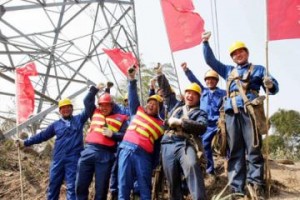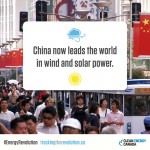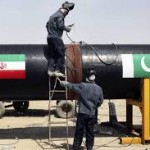 China’s energy sector has long been cursed by geography. After economic reforms were introduced more than thirty years ago, economic growth was concentrated in the coastal regions. In contrast, the main sources of energy, coal and oil supply lay in the north and north-east. The 1990s saw the discovery of new reserves of oil, coal and natural gas. But nearly all of these were also in the north, and many in remote parts of the country such as Inner Mongolia and Xinjiang.
China’s energy sector has long been cursed by geography. After economic reforms were introduced more than thirty years ago, economic growth was concentrated in the coastal regions. In contrast, the main sources of energy, coal and oil supply lay in the north and north-east. The 1990s saw the discovery of new reserves of oil, coal and natural gas. But nearly all of these were also in the north, and many in remote parts of the country such as Inner Mongolia and Xinjiang.
The energy sources most vulnerable to supply disruptions are those which are provided from almost entirely from domestic resources, namely coal and electricity. Coal has long accounted for 60-70% of China’s total primary energy supply and still provides the feedstock for nearly 80% of electricity generation. Coal is transported principally by rail but also along inland and coastal waters and by road. With coal consumption increasing nearly four-fold between 1990 and 2012, the government has struggled to keep pace in the construction of new rail capacity. The problem was most severe in the first decade of the century when coal demand doubled in just 7 years between 2002 and 2009. As a result, the use of trucks grew and resulted in unprecedented levels of congestion along the roads leading away from the coal mining areas of northern China. These deficiencies in the coal distribution system contributed to shortages of electricity supply.
During this period the electricity sector had its own problems, independently of the coal supply bottlenecks. A ban on the construction of new power plants between 1999 and 2002 led to a shortage of electricity supply as demand started to soar from 2003 onwards. In response the power companies launched a massive programme of construction of up to 100 GW of new capacity each year. Whilst this alleviated the worst of the shortages, investment in the transmission and distribution networks failed to keep pace with rising demand.
The uptake of natural gas has been constrained by a shortage of pipelines. Before the last 1990s, natural gas use was limited to a few locations and no long-distance networks existed. Since that time the rate at which gas use has risen has been constrained not by the ability of the national oil companies to find new gas fields and bring them into production but by the pace at which new long distance pipelines and city gas networks can be built.
Twice in the last ten years, China’s government has launched major investment programmes to build infrastructure. In the context of energy supply bottlenecks, these programmes had two opposing consequences. On the one hand, demand for energy grew as rapidly as 10% per year, resulting in a trebling of primary energy consumption between 2000 and 2012. This placed immense pressure on the energy supply chains, as described above. On the other hand, a significant proportion of the investment was directed to increasing the capacity of the energy transportation infrastructure.
The biggest challenge lies with the rail network to transport coal. About 50% of China’s coal production is supplied by rail, and coal accounts for about 50% of the total freight carried by the rail network. As new coal mines were opened in increasingly remote parts of northern and north-western China, the government had to embark on a on a sustained programme of investment which is intended to raise total coal freight capacity to about 3 billion tonnes per year by 2015, or two-thirds of expected national output.
Whilst the power generating companies were commissioning as much as 100 GW of new capacity each year, the two national grid companies were building annually 30,000 to 40,000 km of transmission lines of 220 kV and above, leading to a doubling of grid capacity at this voltage between 2005 and 2012. This construction programme also includes the world’s most ambitious plan for ultra-high-voltage (UHV) DC transmission lines (800 kV and above). The aim is to construct 20,000 km of UHV network by 2017. Construction started in 2006. About 4,600 km have already been completed, with 6,400 km under construction. The strategic objective is to carry electricity from the west of the country to the east, both hydro-electricity and thermal power. At the same time, a growing number of thermal power plants are being constructed near coal mines in order to ease the pressure on the rail system.
The last ten years have also seen massive investment in gas pipelines and liquefied natural gas (LNG) import terminals. Two “West-to-East” pipelines have been built to carry gas from north-west China and from central Asia to central and eastern China, and a third line is under construction. Despite this investment, a shortage of pipelines has long been a major obstacle to the development of coal-bed methane (CBM), as the construction of pipelines lagged behind the development of CBM resources. Other forms of unconventional gas may face the same constraints.
A combination of massive investment in infrastructure and a decline in the rate of economic growth appears to have eased the bottlenecks in China’s energy supply chains. The use of gas is growing rapidly despite the economic slowdown, widespread electricity shortages have become less frequent and power stations have ample stocks of coal. If the government is successful in its efforts to restructure the economy and make it less energy-intensive, then bottlenecks in energy supply may continue to be less severe than in the recent past. Any sudden surge of economic growth and energy demand will bring the problem back.
Though all this investment has undoubtedly yielded benefits, critics of the UHV scheme claim that it is a huge waste of money which will only reinforce the monopoly position of the State Grid Corporation. There are also significant risks of grid system failure which would have widespread consequences. Concerning the siting of power stations near the coal mines, care will be needed to ensure that these plants do not further deplete the already diminished water resources of north and north-west China.
It is likely that the expansion of power transmission and distribution grids will continue for the next 2-3 years, as will construction of rail track and gas pipeline. A key challenge will be to ensure a high standard of construction and effective coordination of operations along the energy supply chain in order to minimise disruptions. If well-built and managed, this new infrastructure should support China’s continuing economic development, provided the level of energy intensity continues to decline.





